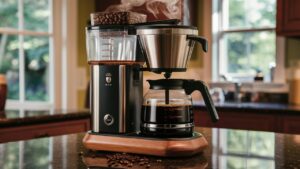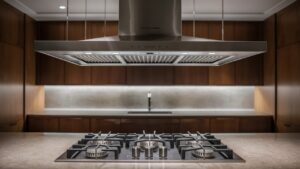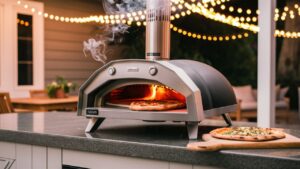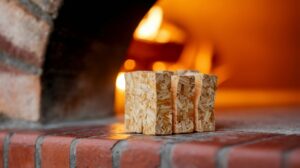Imagine this: you’ve just upgraded your kitchen with a sleek, modern glass top stove. It’s the centerpiece of your culinary space, promising many delightful cooking experiences.
Recommended Best Cookware for Glass Top Stoves in 2025
| Recommendation | Product |
| Best Overall | T-fal Ultimate Hard Anodized Nonstick Cookware |
| Popular Choice | Calphalon Hard-Anodized Nonstick 10-Piece Cookware Set |
| Best Value | CAROTE 16 Piece Pots and Pans Set Nonstick |
| Best Budget | SENSARTE Ceramic Cookware Sets |
| Another Excellent Pick | Nuwave Healthy Duralon Blue Ceramic Nonstick Cookware Set |
But suddenly, a question pops into your mind: what pots and pans should you use to ensure you’re making the most of this elegant appliance? Choosing the right cookware is crucial, not just for maintaining the pristine surface of your stove, but also for optimizing your cooking results.
You might be worried about scratches, uneven heating, or just finding the right balance between functionality and style. You’re not alone, and there’s a science behind making the perfect choice. Unlock the secrets that will transform your cooking experience from ordinary to extraordinary. Discover the types of pots and pans that will not only protect your investment but elevate your culinary creations. Prepare to be amazed at how the right cookware can make all the difference. Are you ready to dive into the world of glass top stove mastery? Keep reading, because this guide is just what you need.
Types Of Cookware Materials
Choosing the right cookware for a glass top stove is crucial. Opt for smooth-bottomed pots and pans to prevent scratches. Stainless steel, aluminum, and copper are popular choices for their compatibility and heat distribution.
Choosing the right cookware for your glass top stove can transform your cooking experience. Different materials interact uniquely with these sleek surfaces. Understanding these differences can save you time, money, and frustration in the kitchen. Let’s explore the most popular cookware materials and see how they stack up.
Stainless Steel
Stainless steel is a favorite for many home cooks. It’s durable, resistant to scratches, and doesn’t react with food, making it perfect for a variety of dishes. However, it can have hot spots. Consider stainless steel with an aluminum or copper core for even heating. I once tried making a delicate sauce, and the even distribution made all the difference.
Aluminum
Aluminum is lightweight and heats quickly. This can be a great advantage when you’re in a hurry. However, it can react with acidic foods, affecting taste. Anodized aluminum solves this issue, providing a non-reactive surface. It’s also less prone to warping, which is critical for maintaining contact with your glass top stove.
Copper
Copper offers excellent heat conductivity. It heats up and cools down quickly, giving you precise temperature control. But, it can be expensive and requires regular maintenance to avoid tarnishing. A layer of stainless steel inside copper pots can minimize upkeep while maximizing efficiency. Imagine making a delicate dish that demands exact temperatures; copper could be your best ally.
Cast Iron
Cast iron is known for its heat retention and durability. It’s perfect for slow cooking and can go from stovetop to oven seamlessly. However, its weight can be a drawback on glass top stoves, as it may scratch the surface. Ensure the bottom is smooth and handle it carefully. Picture a hearty stew simmering evenly; cast iron delivers comforting results every time. In your kitchen, which material do you find yourself reaching for most often? Each has its advantages, but knowing how they perform on a glass top stove can enhance your cooking adventures.
Best Cookware Features
Choosing the right pots and pans for your glass top stove is crucial for optimal cooking performance and maintaining the stove’s surface. The best cookware features can make a significant difference in your cooking experience, ensuring your meals are cooked evenly and your stove remains in pristine condition. Let’s dive into the essential characteristics you should look for when selecting cookware for your glass top stove.
Flat Bottoms
The importance of flat-bottomed cookware cannot be overstated. Flat bottoms ensure even heat distribution, which is vital for cooking your food evenly. Imagine trying to fry an egg in a pan that wobbles and doesn’t sit flat on the stove. It’s a recipe for uneven cooking and frustration. A flat-bottomed pot or pan ensures every inch of your dish receives the same amount of heat, preventing hot spots and undercooked areas. Check your pots at home; do they sit perfectly flat?
Smooth Surfaces
Think of your glass top stove as a delicate piece of art. It requires gentle handling and smooth surfaces to avoid scratches and damage. Cookware with smooth surfaces, such as stainless steel or anodized aluminum, can help protect your stove’s surface. Rough bottoms and sharp edges can create scratches that are difficult to repair. Next time you’re shopping for cookware, feel the bottom of the pan. Is it smooth enough to glide effortlessly across your stovetop?
Weight Considerations
Heavy pots and pans might seem like a great idea because they often offer durability and stability. However, excessive weight can be detrimental to your glass top stove. The heavy cookware can lead to cracks or damage if dropped or dragged. Consider lighter options that still offer robust performance. Ever lifted a cast iron skillet and worried about dropping it? A lighter pan might ease those concerns while still delivering excellent cooking results.
When choosing cookware for your glass top stove, think about the features that will enhance your cooking and protect your stove. Are your current pots and pans meeting these criteria? If not, it might be time to explore new options that offer flat bottoms, smooth surfaces, and appropriate weight.
Cookware Brands To Consider
Choosing the right cookware for a glass top stove is crucial. The wrong pots can scratch or damage the surface. Understanding which brands offer the best options can save you time and money. Below are some of the top brands in different categories for glass top stoves.
High-end Brands
For those seeking quality, consider All-Clad. Their stainless steel cookware offers excellent durability. It distributes heat evenly, preventing hot spots. Le Creuset is another high-end choice. Known for their enamel-coated cast iron, they offer long-lasting performance. Both brands are well-regarded for their craftsmanship and reliability.
Budget-friendly Options
Good cookware doesn’t need to break the bank. T-fal offers affordable non-stick pans that work well on glass tops. Their products are lightweight and easy to handle. Cuisinart is another budget-friendly brand. Their stainless steel sets are affordable yet efficient. These brands balance cost and quality effectively.
Eco-friendly Choices
Caring for the planet? GreenPan is a top eco-friendly brand. They offer non-toxic, ceramic cookware suitable for glass tops. The materials used are free from harmful chemicals. Another great option is Beka Eco-Logic. Their pans are made from sustainable materials. These brands focus on both environmental impact and performance.
Tips For Maintaining Glass Top Stoves
Choose cookware with flat bottoms for even heat distribution on glass top stoves. Avoid cast iron, as it can scratch surfaces. Opt for stainless steel or aluminum pots and pans to prevent damage and ensure efficient cooking.
Maintaining a glass top stove can be a challenge, but with the right tips, you can keep it looking pristine and functioning well. Many people are concerned about the delicate nature of glass tops, which are prone to scratches and can be tricky to clean. By following some practical advice, you can enjoy the sleek look of your stove without the stress of damaging it.
Cleaning Techniques
Regular cleaning is crucial for maintaining a glass top stove. Use a non-abrasive cleaner or a mixture of vinegar and water. Avoid harsh chemicals that might damage the glass. Wipe spills immediately with a soft cloth. Dried spills can be tougher to remove and may require a special glass top stove cleaner. A razor blade scraper can be used carefully for stubborn spots. Always hold it at a 45-degree angle to avoid scratching.
Preventing Scratches
Preventing scratches starts with choosing the right cookware. Opt for pots and pans with smooth, flat bottoms. Cast iron and stoneware can be rough, so use them with caution or avoid them altogether. Lift your cookware instead of sliding it. Sliding can cause scratches that are hard to repair. Consider using protective pads or mats designed for glass tops. They can provide an extra layer of protection.
Handling Heavy Cookware
Glass top stoves can crack under excessive weight. Always be gentle when handling heavy cookware like large pots or cast iron skillets. Distribute weight evenly across the stove to prevent stress on the glass. Avoid dropping cookware from a height, even a few inches can cause damage. Think about how you position your cookware. Placing heavy items centrally can help reduce the risk of damage. What steps do you take to ensure your glass top stove remains in top condition? Share your tips in the comments below!
Common Mistakes To Avoid
Glass top stoves are popular for their sleek design. They require specific care to stay in good condition. Many users unknowingly make mistakes that can cause damage. Understanding these common errors can help keep your stove looking new.
Using Rough Bottom Cookware
Some pots have rough bottoms. These can scratch the glass surface. Scratches not only look bad. They can also affect cooking efficiency. Always check cookware bottoms for smoothness. This will keep your stove safe and scratch-free.
Ignoring Weight Limits
Heavy pots can be harmful. Glass tops are delicate. Exceeding weight limits may cause cracks. This is costly to repair. Always use cookware within recommended weight. This ensures safety and prevents damage.
Neglecting Regular Cleaning
Food spills can stick. They harden and cause stains. Regular cleaning prevents build-up. Use gentle cleaners for best results. Keeping the stove clean will improve its lifespan. It also keeps cooking surfaces smooth.
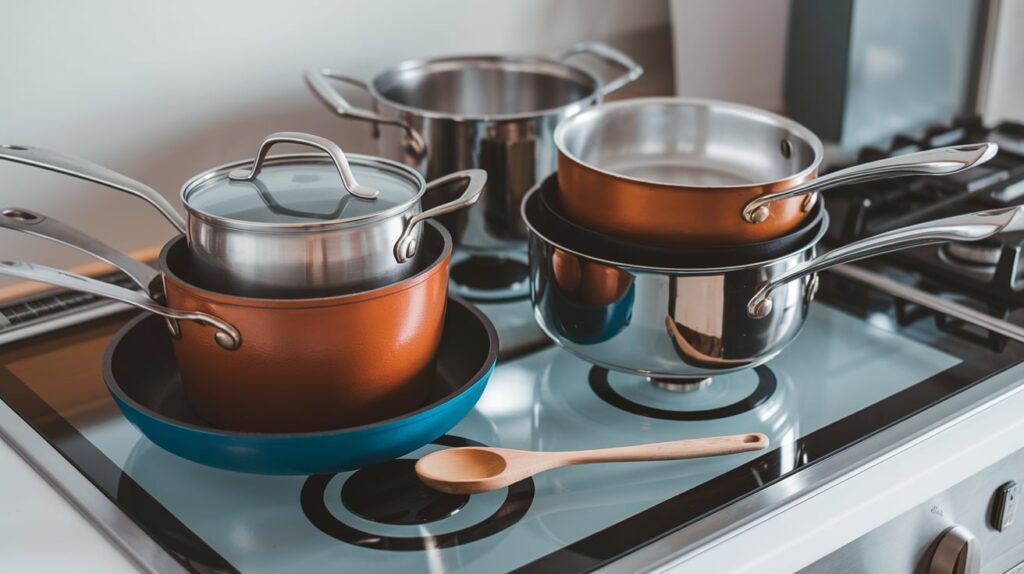
Frequently Asked Questions
What Types Of Pots Are Safe For Glass Top Stoves?
Stainless steel pots are ideal for glass top stoves. They offer durability and even heat distribution. Avoid using cast iron or stoneware as they can scratch the surface. Additionally, flat-bottomed pots ensure better contact and heat efficiency on glass tops.
Can I Use Nonstick Pans On Glass Stoves?
Yes, nonstick pans are safe for glass stoves. They provide easy cleanup and prevent food from sticking. Ensure the pan’s bottom is smooth to avoid scratches. Avoid dragging pans across the surface to maintain the stove’s pristine condition.
Do Heavy Pots Damage Glass Top Stoves?
Heavy pots can potentially damage glass top stoves. They might scratch or crack the surface if dropped. Always handle heavy cookware with care. Lift rather than slide pots to prevent surface damage.
Are Aluminum Pans Suitable For Glass Cooktops?
Aluminum pans are generally suitable for glass cooktops. They offer even heat distribution and are lightweight. However, ensure the bottom is smooth to prevent scratches. Some aluminum pans may leave marks, so choose high-quality options.
Conclusion
Selecting the right pots and pans for glass top stoves is crucial. They prevent scratches and ensure even cooking. Choose flat-bottomed cookware for better heat distribution. Materials like stainless steel and cast iron work well. Avoid heavy pots that might crack the glass.
Lightweight options are safer. Regularly check for any damage to your cookware. Clean them gently to maintain their effectiveness. Proper care extends their lifespan. Remember, the right choice keeps your stove looking new. Invest in quality cookware for lasting performance.
Happy cooking with your glass top stove!
